MBA622: Comprehensive Health Strategies for Residential Aged Care
VerifiedAdded on 2022/08/25
|25
|2038
|29
Report
AI Summary
This report provides a comprehensive analysis of the impact of technology, specifically social and physical assistive technologies, on Bupa Aged Care, a leading residential aged care provider in Australia. The study explores the challenges and opportunities presented by technologies like Electronic Care Management (ECM) and robotics, considering the perspectives of various stakeholders including patients, families, staff, and management. It examines the ethical responsibilities associated with technology adoption, such as privacy concerns and emotional engagement, and offers recommendations for mitigating these issues through staff training and sterilization protocols. The report concludes that technological advancements have significantly changed the healthcare sector, particularly in residential care, and highlights the importance of strategic implementation to meet the needs of residents.
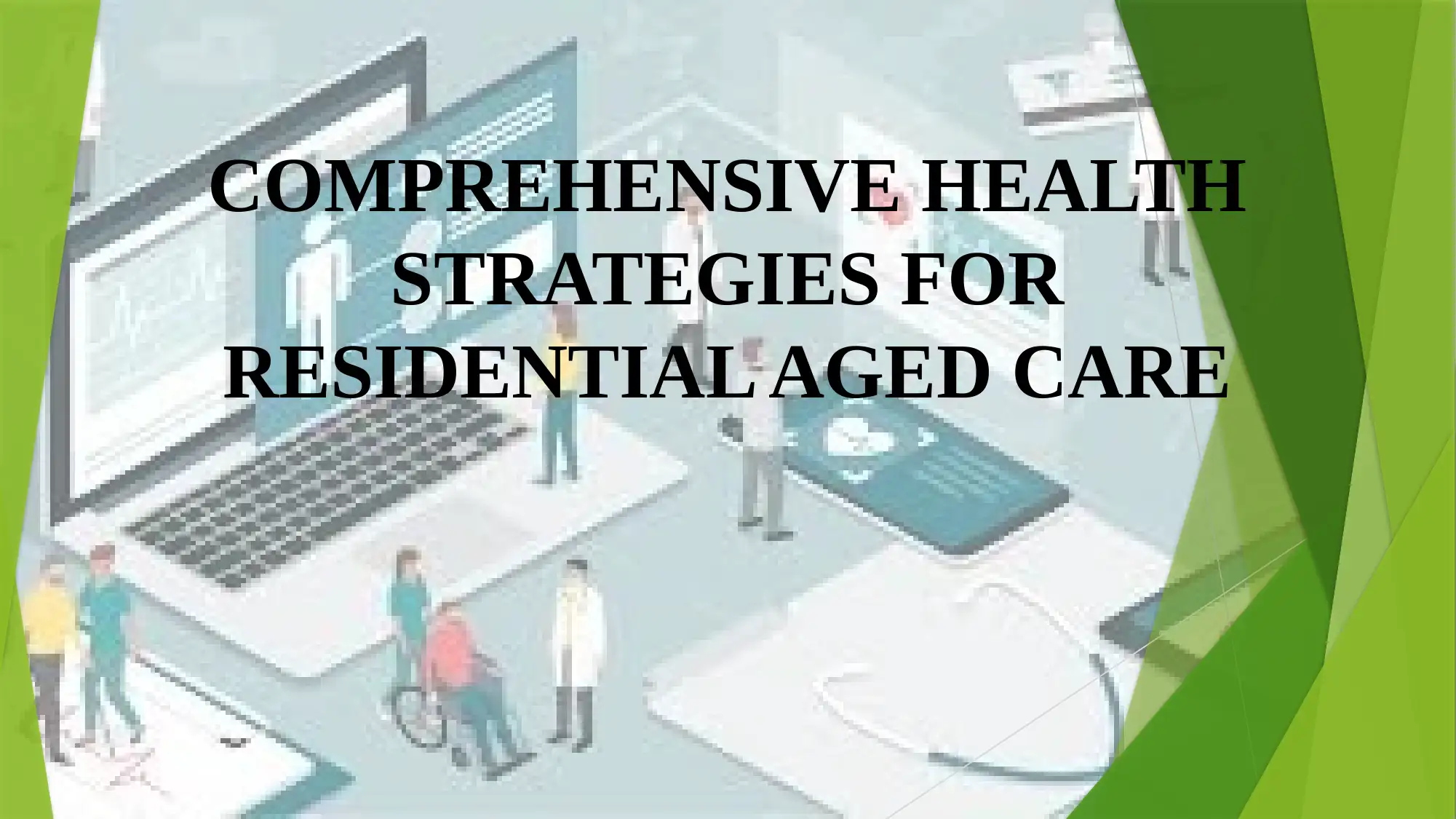
COMPREHENSIVE HEALTH
STRATEGIES FOR
RESIDENTIAL AGED CARE
STRATEGIES FOR
RESIDENTIAL AGED CARE
Paraphrase This Document
Need a fresh take? Get an instant paraphrase of this document with our AI Paraphraser
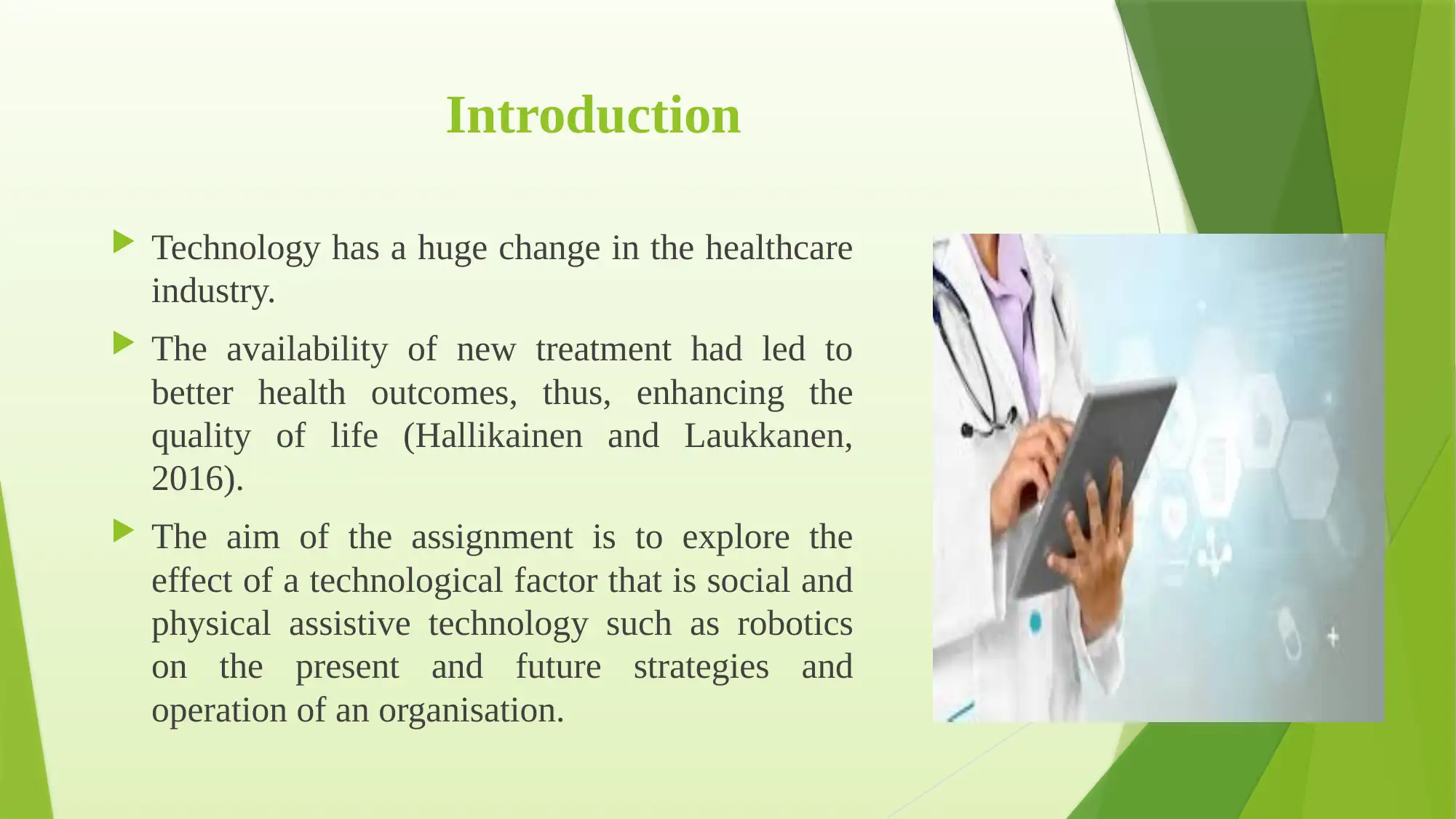
Introduction
Technology has a huge change in the healthcare
industry.
The availability of new treatment had led to
better health outcomes, thus, enhancing the
quality of life (Hallikainen and Laukkanen,
2016).
The aim of the assignment is to explore the
effect of a technological factor that is social and
physical assistive technology such as robotics
on the present and future strategies and
operation of an organisation.
Technology has a huge change in the healthcare
industry.
The availability of new treatment had led to
better health outcomes, thus, enhancing the
quality of life (Hallikainen and Laukkanen,
2016).
The aim of the assignment is to explore the
effect of a technological factor that is social and
physical assistive technology such as robotics
on the present and future strategies and
operation of an organisation.
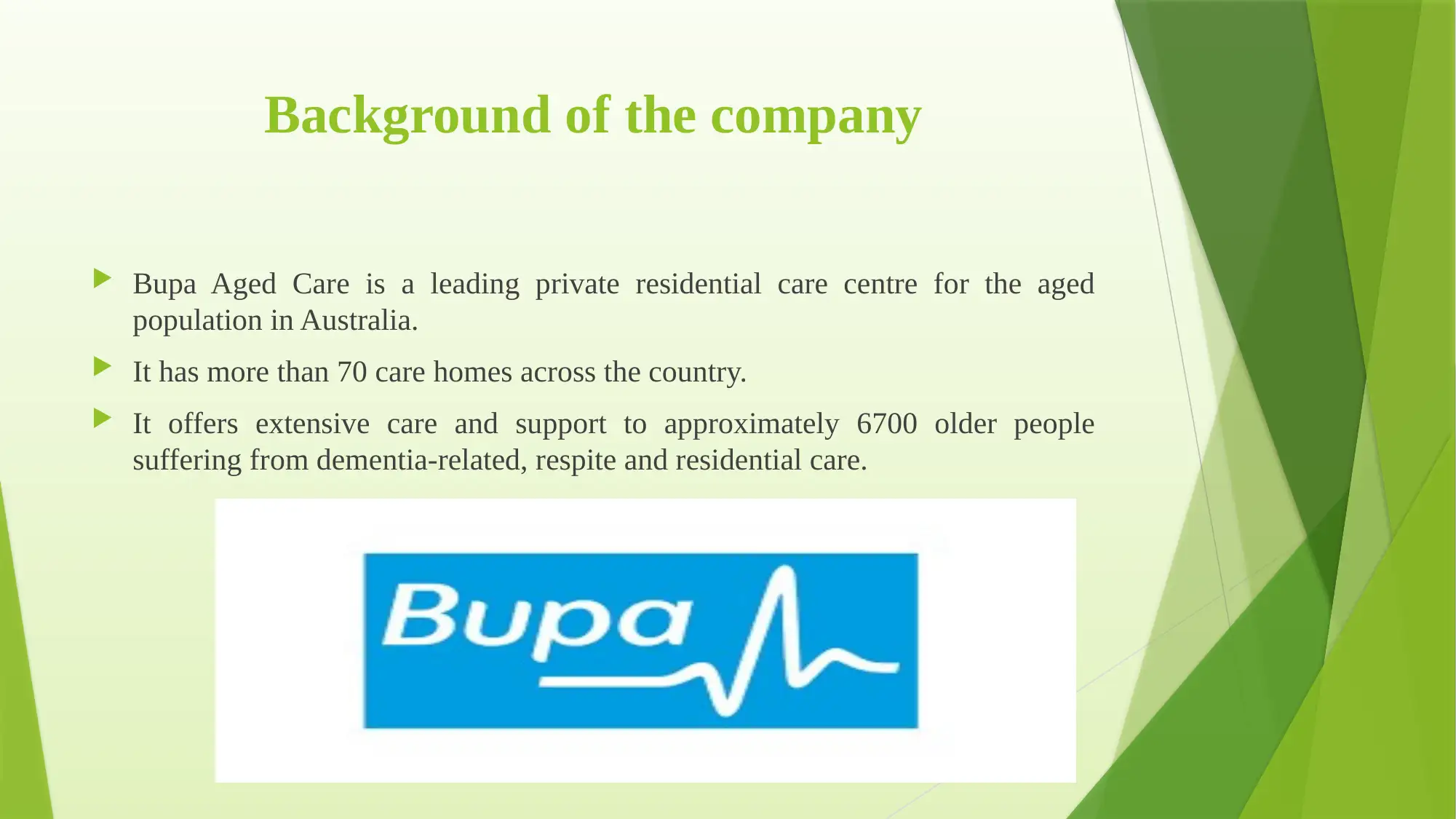
Background of the company
Bupa Aged Care is a leading private residential care centre for the aged
population in Australia.
It has more than 70 care homes across the country.
It offers extensive care and support to approximately 6700 older people
suffering from dementia-related, respite and residential care.
Bupa Aged Care is a leading private residential care centre for the aged
population in Australia.
It has more than 70 care homes across the country.
It offers extensive care and support to approximately 6700 older people
suffering from dementia-related, respite and residential care.
⊘ This is a preview!⊘
Do you want full access?
Subscribe today to unlock all pages.

Trusted by 1+ million students worldwide
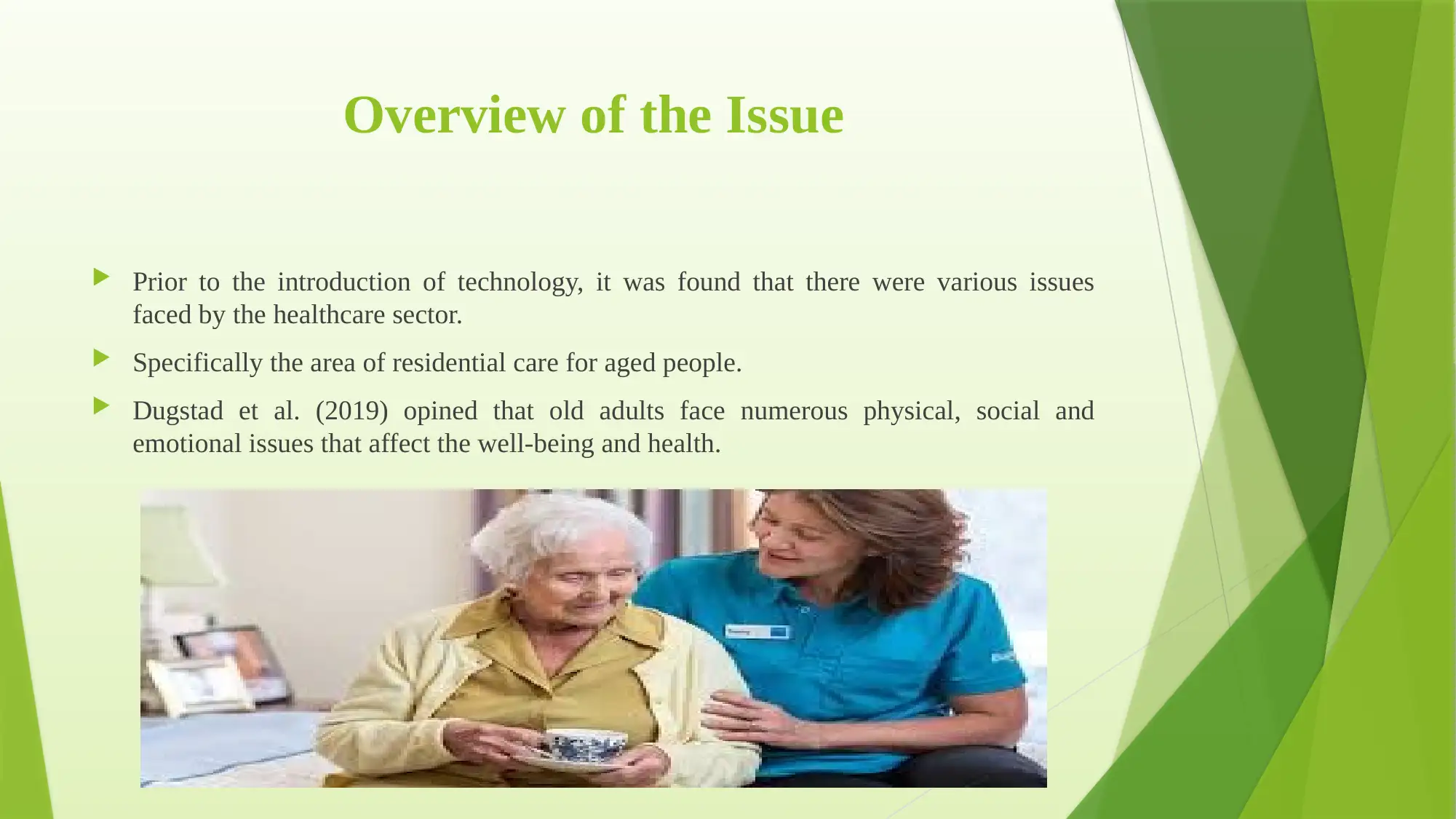
Overview of the Issue
Prior to the introduction of technology, it was found that there were various issues
faced by the healthcare sector.
Specifically the area of residential care for aged people.
Dugstad et al. (2019) opined that old adults face numerous physical, social and
emotional issues that affect the well-being and health.
Prior to the introduction of technology, it was found that there were various issues
faced by the healthcare sector.
Specifically the area of residential care for aged people.
Dugstad et al. (2019) opined that old adults face numerous physical, social and
emotional issues that affect the well-being and health.
Paraphrase This Document
Need a fresh take? Get an instant paraphrase of this document with our AI Paraphraser
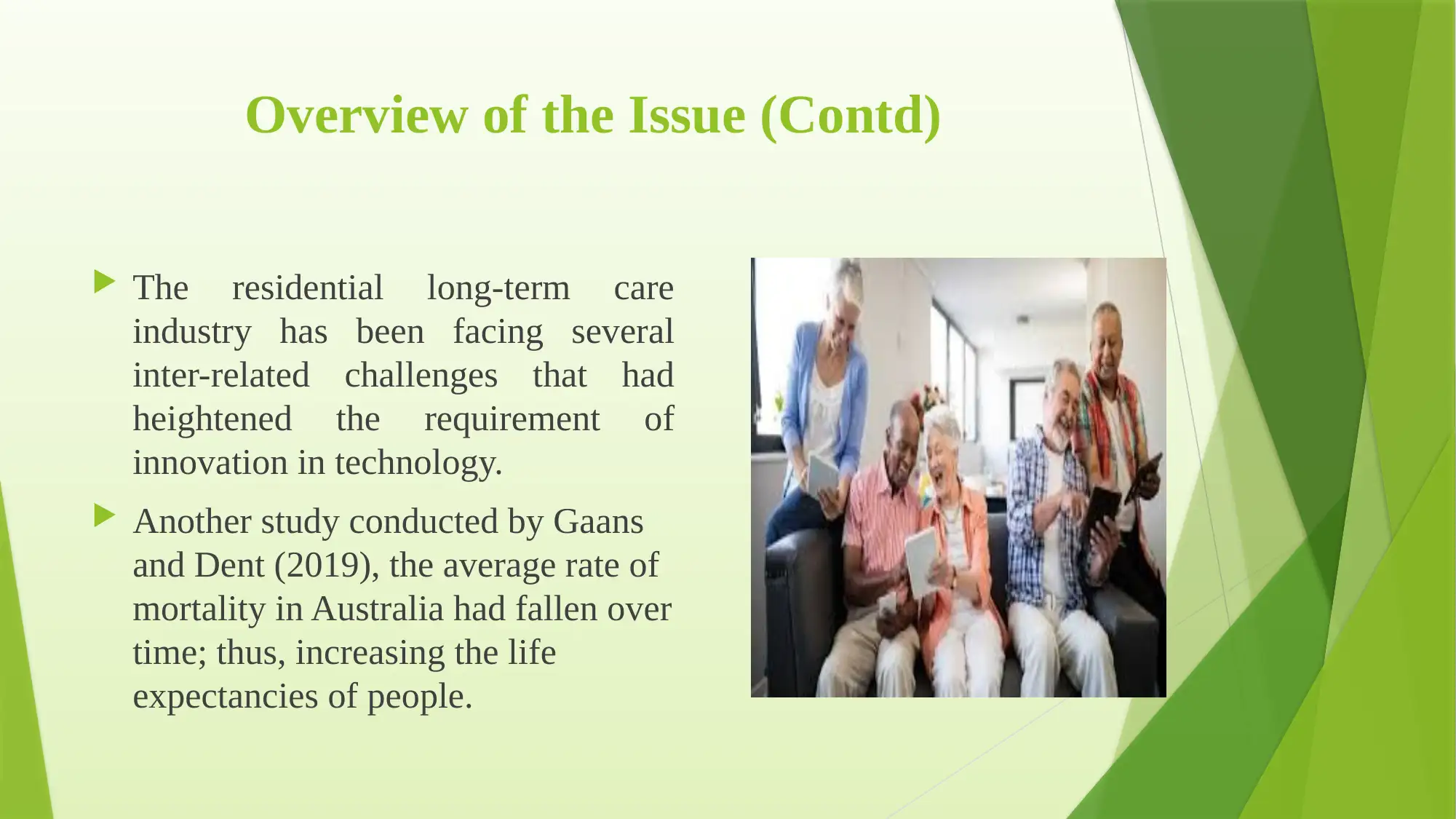
Overview of the Issue (Contd)
The residential long-term care
industry has been facing several
inter-related challenges that had
heightened the requirement of
innovation in technology.
Another study conducted by Gaans
and Dent (2019), the average rate of
mortality in Australia had fallen over
time; thus, increasing the life
expectancies of people.
The residential long-term care
industry has been facing several
inter-related challenges that had
heightened the requirement of
innovation in technology.
Another study conducted by Gaans
and Dent (2019), the average rate of
mortality in Australia had fallen over
time; thus, increasing the life
expectancies of people.
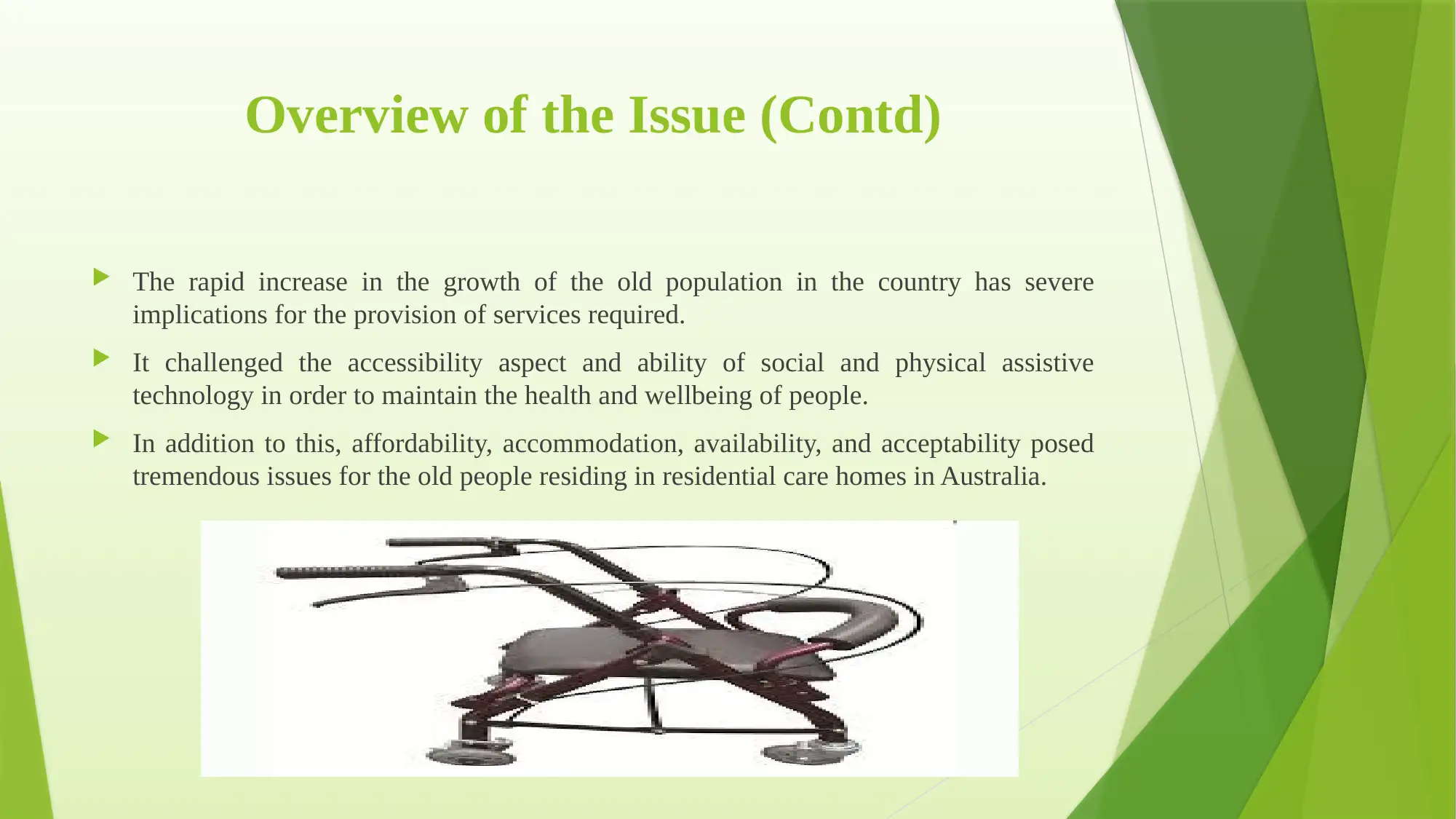
Overview of the Issue (Contd)
The rapid increase in the growth of the old population in the country has severe
implications for the provision of services required.
It challenged the accessibility aspect and ability of social and physical assistive
technology in order to maintain the health and wellbeing of people.
In addition to this, affordability, accommodation, availability, and acceptability posed
tremendous issues for the old people residing in residential care homes in Australia.
The rapid increase in the growth of the old population in the country has severe
implications for the provision of services required.
It challenged the accessibility aspect and ability of social and physical assistive
technology in order to maintain the health and wellbeing of people.
In addition to this, affordability, accommodation, availability, and acceptability posed
tremendous issues for the old people residing in residential care homes in Australia.
⊘ This is a preview!⊘
Do you want full access?
Subscribe today to unlock all pages.

Trusted by 1+ million students worldwide
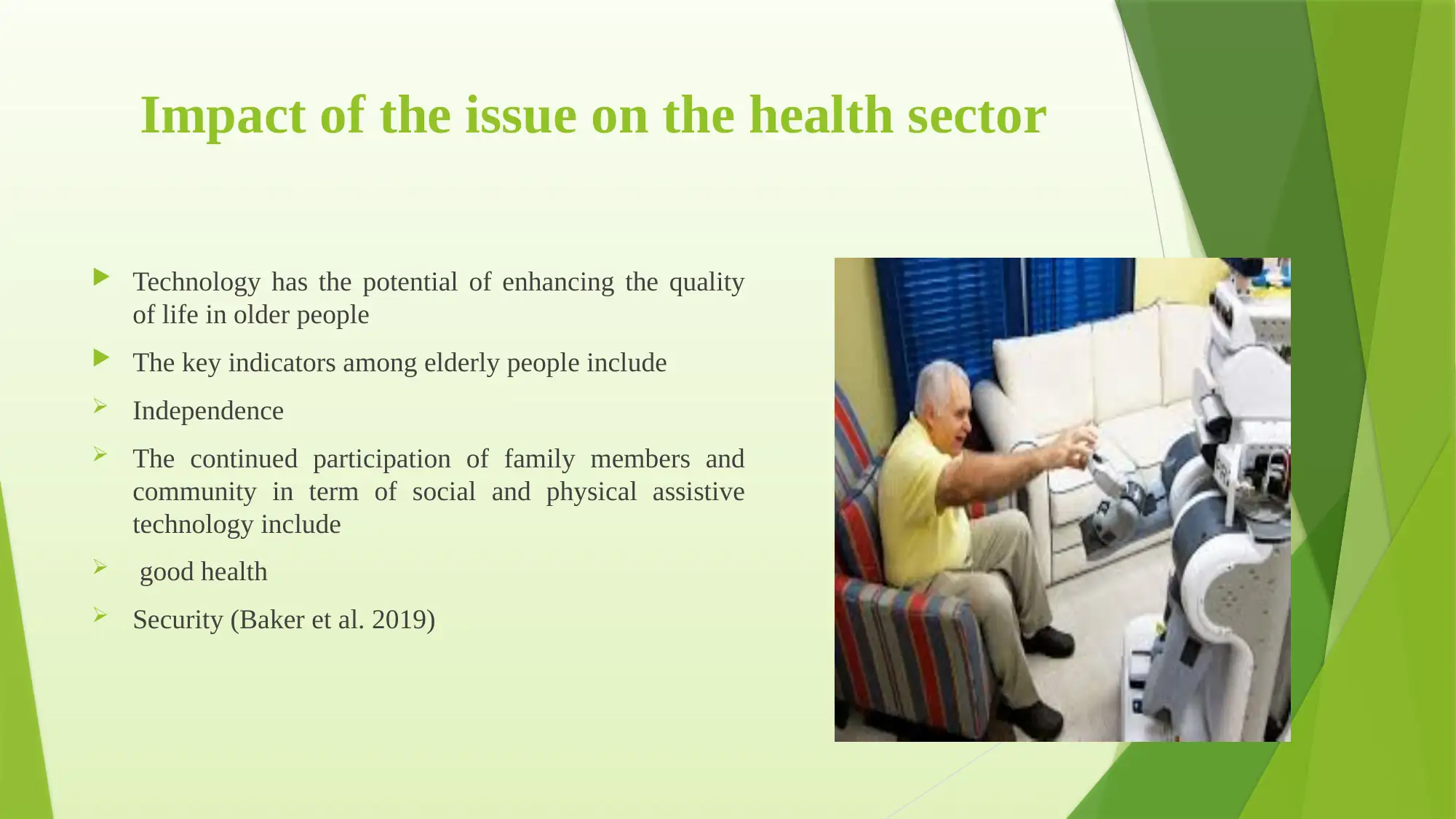
Impact of the issue on the health sector
Technology has the potential of enhancing the quality
of life in older people
The key indicators among elderly people include
Independence
The continued participation of family members and
community in term of social and physical assistive
technology include
good health
Security (Baker et al. 2019)
Technology has the potential of enhancing the quality
of life in older people
The key indicators among elderly people include
Independence
The continued participation of family members and
community in term of social and physical assistive
technology include
good health
Security (Baker et al. 2019)
Paraphrase This Document
Need a fresh take? Get an instant paraphrase of this document with our AI Paraphraser
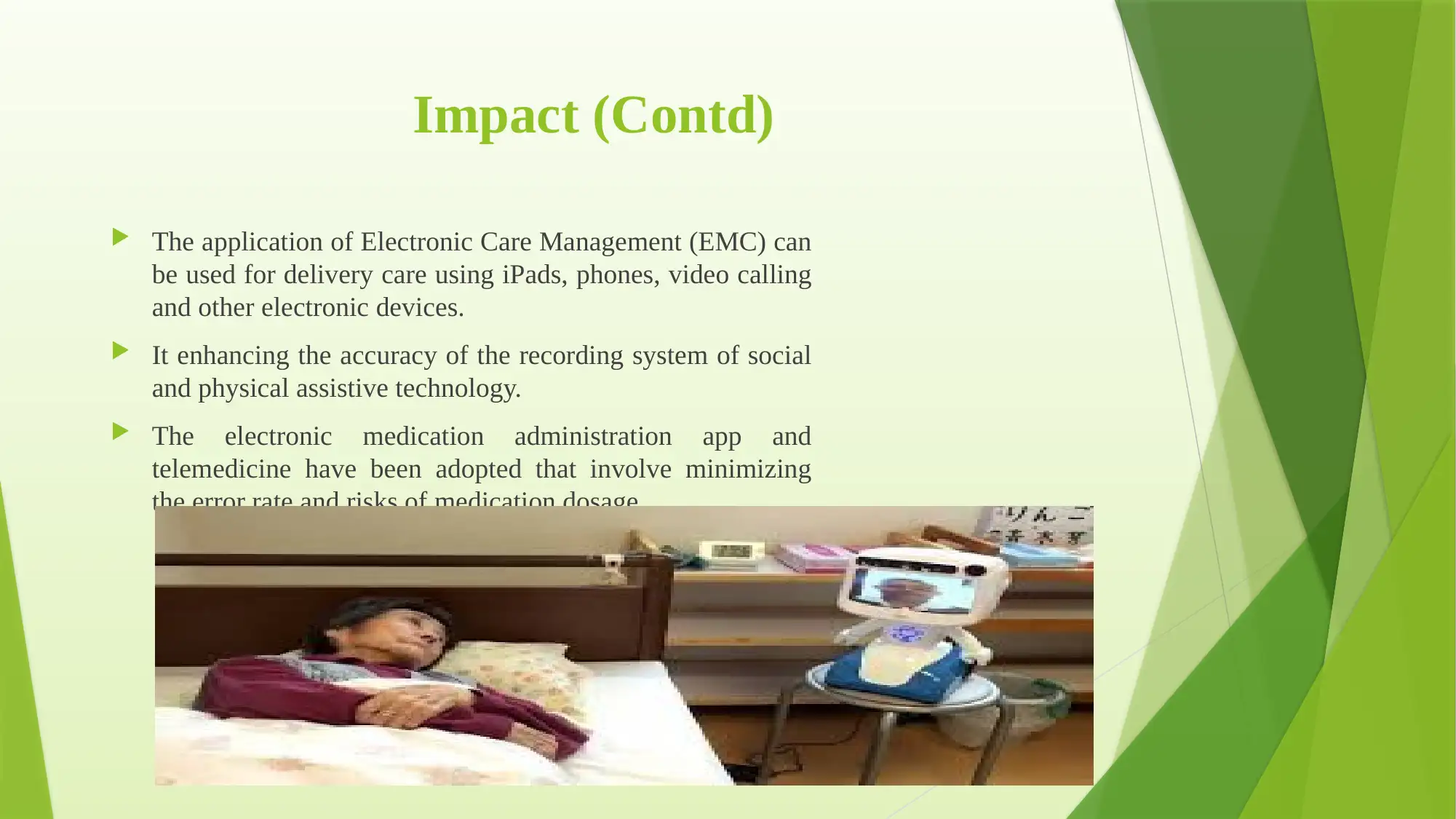
Impact (Contd)
The application of Electronic Care Management (EMC) can
be used for delivery care using iPads, phones, video calling
and other electronic devices.
It enhancing the accuracy of the recording system of social
and physical assistive technology.
The electronic medication administration app and
telemedicine have been adopted that involve minimizing
the error rate and risks of medication dosage.
The application of Electronic Care Management (EMC) can
be used for delivery care using iPads, phones, video calling
and other electronic devices.
It enhancing the accuracy of the recording system of social
and physical assistive technology.
The electronic medication administration app and
telemedicine have been adopted that involve minimizing
the error rate and risks of medication dosage.
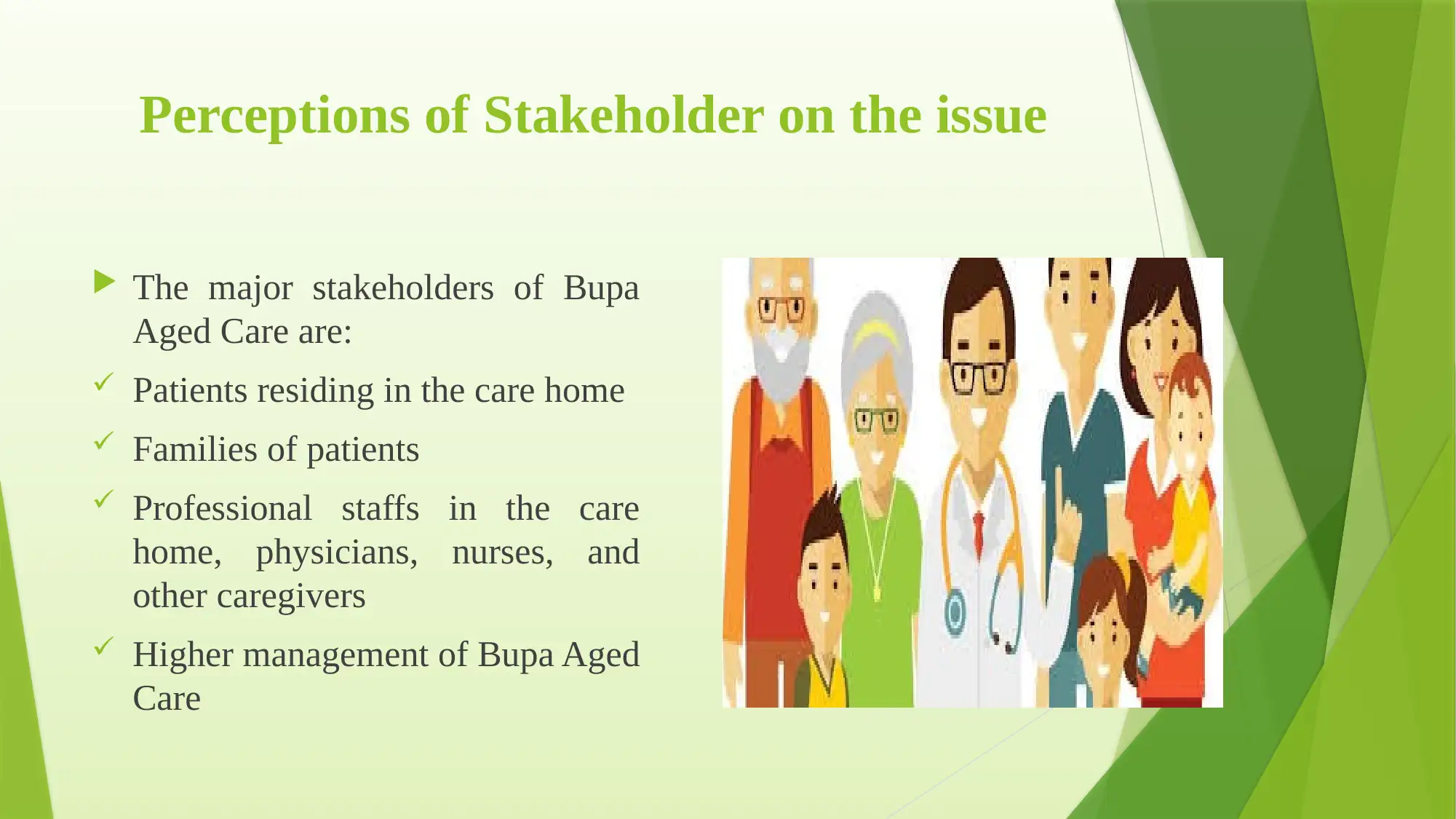
Perceptions of Stakeholder on the issue
The major stakeholders of Bupa
Aged Care are:
Patients residing in the care home
Families of patients
Professional staffs in the care
home, physicians, nurses, and
other caregivers
Higher management of Bupa Aged
Care
The major stakeholders of Bupa
Aged Care are:
Patients residing in the care home
Families of patients
Professional staffs in the care
home, physicians, nurses, and
other caregivers
Higher management of Bupa Aged
Care
⊘ This is a preview!⊘
Do you want full access?
Subscribe today to unlock all pages.

Trusted by 1+ million students worldwide
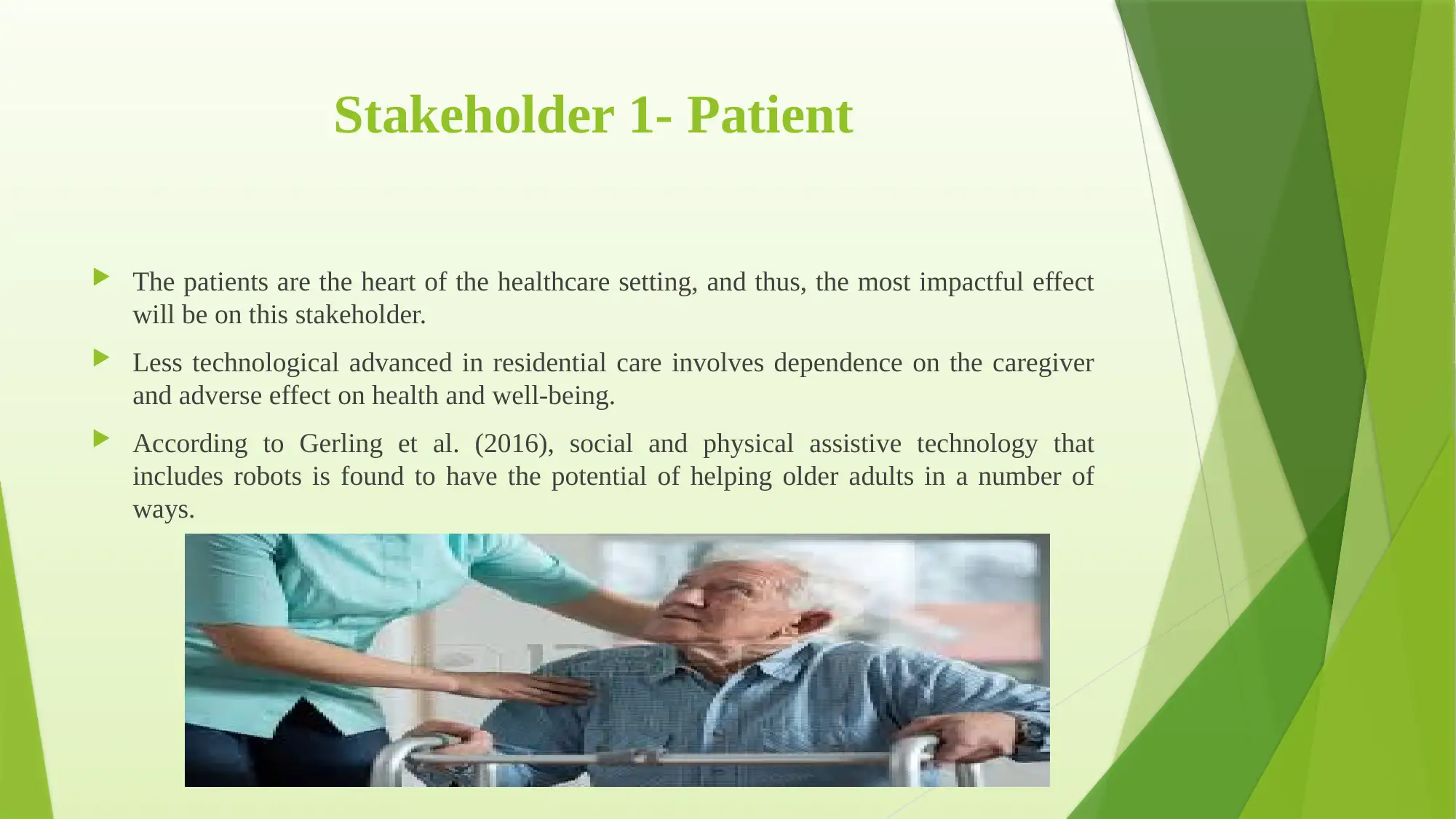
Stakeholder 1- Patient
The patients are the heart of the healthcare setting, and thus, the most impactful effect
will be on this stakeholder.
Less technological advanced in residential care involves dependence on the caregiver
and adverse effect on health and well-being.
According to Gerling et al. (2016), social and physical assistive technology that
includes robots is found to have the potential of helping older adults in a number of
ways.
The patients are the heart of the healthcare setting, and thus, the most impactful effect
will be on this stakeholder.
Less technological advanced in residential care involves dependence on the caregiver
and adverse effect on health and well-being.
According to Gerling et al. (2016), social and physical assistive technology that
includes robots is found to have the potential of helping older adults in a number of
ways.
Paraphrase This Document
Need a fresh take? Get an instant paraphrase of this document with our AI Paraphraser
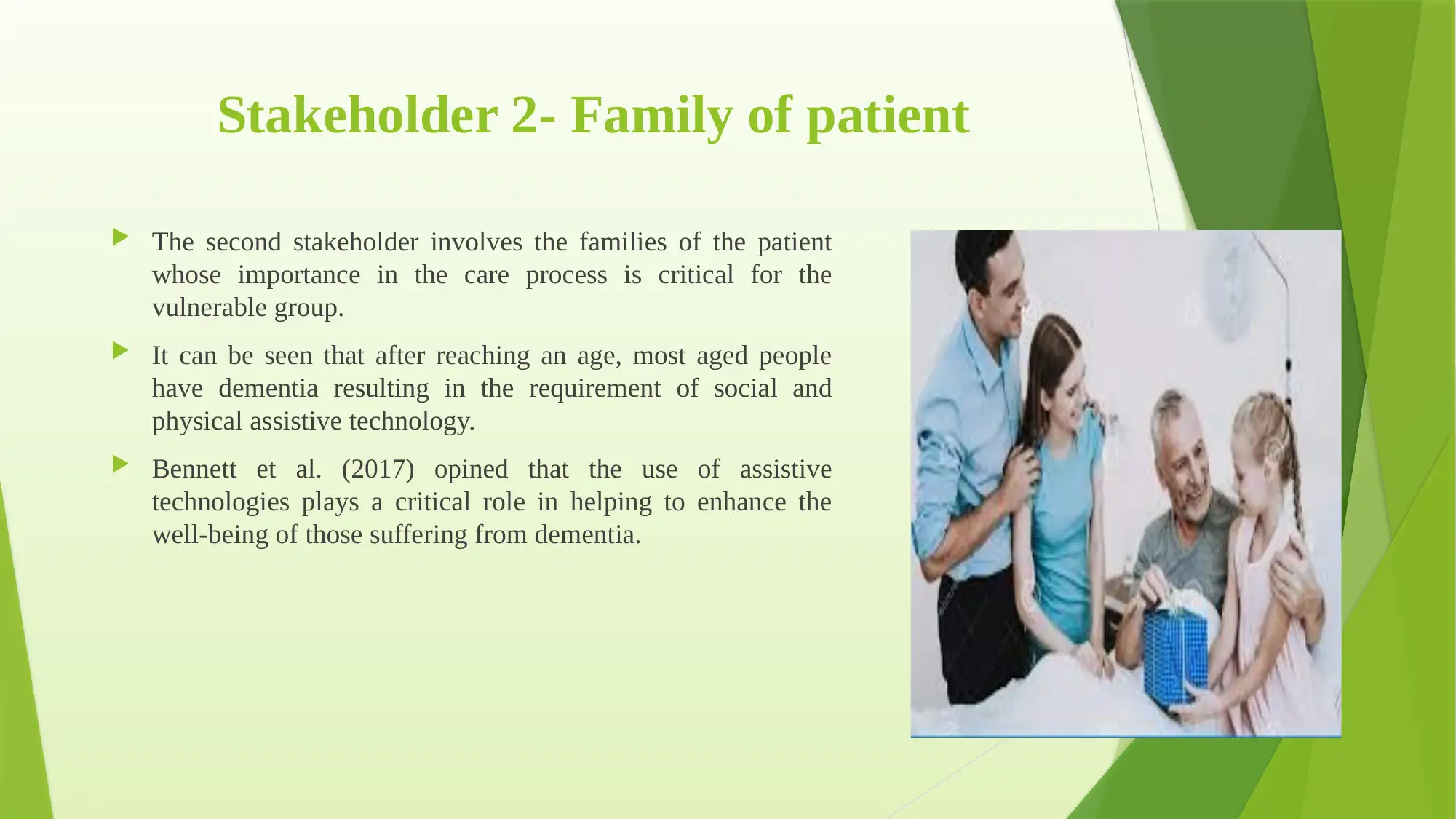
Stakeholder 2- Family of patient
The second stakeholder involves the families of the patient
whose importance in the care process is critical for the
vulnerable group.
It can be seen that after reaching an age, most aged people
have dementia resulting in the requirement of social and
physical assistive technology.
Bennett et al. (2017) opined that the use of assistive
technologies plays a critical role in helping to enhance the
well-being of those suffering from dementia.
The second stakeholder involves the families of the patient
whose importance in the care process is critical for the
vulnerable group.
It can be seen that after reaching an age, most aged people
have dementia resulting in the requirement of social and
physical assistive technology.
Bennett et al. (2017) opined that the use of assistive
technologies plays a critical role in helping to enhance the
well-being of those suffering from dementia.
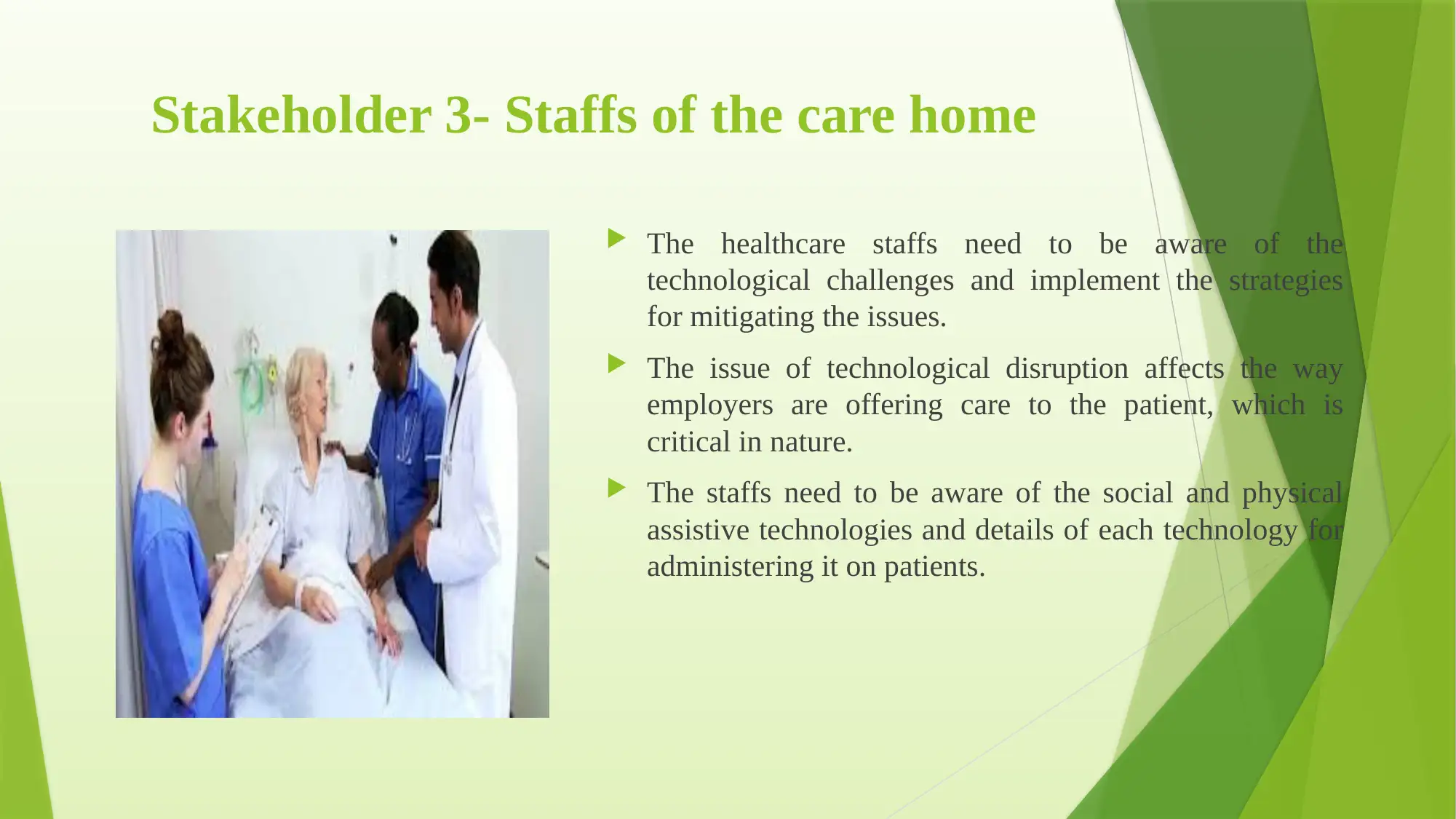
Stakeholder 3- Staffs of the care home
The healthcare staffs need to be aware of the
technological challenges and implement the strategies
for mitigating the issues.
The issue of technological disruption affects the way
employers are offering care to the patient, which is
critical in nature.
The staffs need to be aware of the social and physical
assistive technologies and details of each technology for
administering it on patients.
The healthcare staffs need to be aware of the
technological challenges and implement the strategies
for mitigating the issues.
The issue of technological disruption affects the way
employers are offering care to the patient, which is
critical in nature.
The staffs need to be aware of the social and physical
assistive technologies and details of each technology for
administering it on patients.
⊘ This is a preview!⊘
Do you want full access?
Subscribe today to unlock all pages.

Trusted by 1+ million students worldwide
1 out of 25
Related Documents
Your All-in-One AI-Powered Toolkit for Academic Success.
+13062052269
info@desklib.com
Available 24*7 on WhatsApp / Email
![[object Object]](/_next/static/media/star-bottom.7253800d.svg)
Unlock your academic potential
Copyright © 2020–2025 A2Z Services. All Rights Reserved. Developed and managed by ZUCOL.





